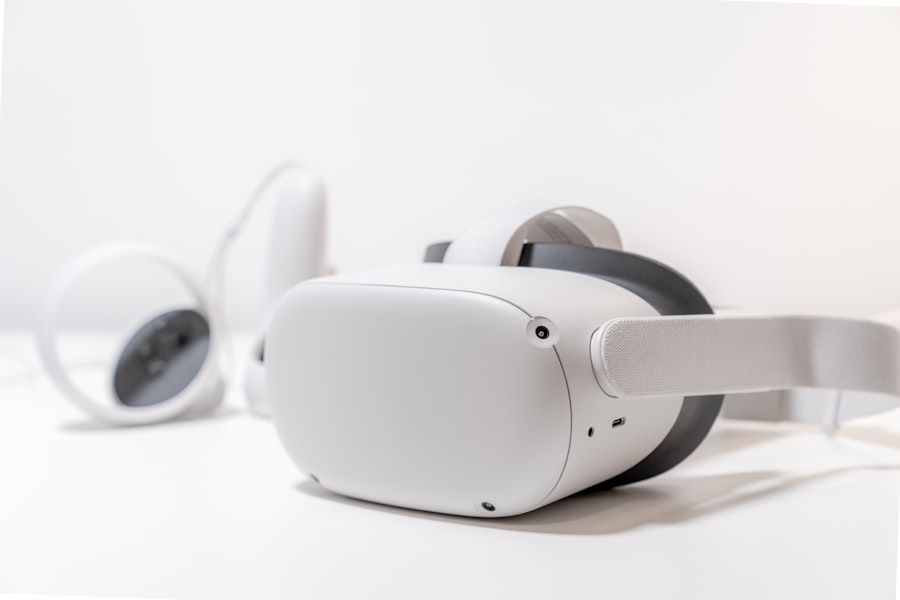The sports and fitness industry is experiencing a significant transformation due to technological advancements. These innovations are affecting all aspects of sports, from athlete training to fan engagement. Wearable devices, virtual reality, and artificial intelligence are not just enhancing the field but fundamentally changing athletic performance and spectator experiences.
These technologies are redefining human potential and engagement in sports. The integration of technology in sports and fitness represents a fundamental shift that aims to improve performance, enhance safety, and strengthen connections between athletes and fans. This technological evolution has implications for athletes, coaches, organizations, and audiences.
It has created an ecosystem where data-driven insights inform training regimens, virtual experiences engage fans, and artificial intelligence predicts outcomes with high accuracy. This technological convergence in sports is creating new opportunities and challenges. It is influencing performance tracking, training methodologies, athlete branding, and raising ethical considerations.
As these innovations continue to develop, they are likely to have a lasting impact on the future of sports and fitness.
Key Takeaways
- Wearable technology allows for accurate performance tracking and analysis, leading to improved training and performance in sports and fitness.
- Virtual reality and augmented reality are revolutionizing sports training and fan engagement by providing immersive and interactive experiences.
- Artificial intelligence plays a crucial role in sports analytics and injury prevention, providing valuable insights and predictions for athletes and teams.
- Social media and digital platforms have a significant impact on athlete branding and fan interaction, creating new opportunities for engagement and exposure.
- The integration of big data and machine learning in sports marketing and business strategies enables more targeted and effective decision-making, leading to better outcomes for sports organizations.
Wearable Technology and Its Impact on Performance Tracking
Wearable technology has emerged as a game-changer in the realm of sports performance tracking. Devices such as smartwatches, fitness bands, and specialized sensors provide athletes with real-time data on various metrics, including heart rate, distance covered, speed, and even sleep patterns. This wealth of information allows athletes to monitor their physical condition with remarkable precision, enabling them to make informed decisions about their training regimens.
Coaches can also leverage this data to tailor workouts to individual athletes’ needs, optimizing performance while minimizing the risk of injury. The ability to track performance metrics in real-time fosters a culture of accountability and continuous improvement among athletes, pushing them to reach new heights. Moreover, the impact of wearable technology extends beyond individual performance; it also enhances team dynamics.
Coaches can analyze collective data from multiple players to identify trends and patterns that inform strategic decisions during games. For instance, understanding how players’ fatigue levels fluctuate throughout a match can lead to more effective substitutions and game plans. Additionally, wearable technology facilitates communication between athletes and coaches, allowing for immediate feedback during training sessions.
This synergy between data collection and coaching strategies not only elevates individual performance but also strengthens team cohesion, ultimately leading to improved outcomes on the field.
Virtual Reality and Augmented Reality in Sports Training and Fan Engagement

Virtual reality (VR) and augmented reality (AR) are redefining the training landscape for athletes while simultaneously enhancing fan engagement in unprecedented ways. In training environments, VR simulations allow athletes to immerse themselves in realistic game scenarios without the physical toll of traditional practice. For example, quarterbacks can practice their decision-making skills by navigating virtual defenses, honing their ability to read plays in real-time.
This technology not only accelerates skill acquisition but also builds mental resilience by exposing athletes to high-pressure situations in a controlled setting. As a result, athletes can refine their techniques and strategies more effectively than ever before. On the fan engagement front, AR applications are transforming how spectators interact with live events.
Imagine attending a football game where fans can use their smartphones to access real-time statistics, player bios, or even interactive replays by simply pointing their devices at the field. This immersive experience deepens fans’ connection to the game and enhances their understanding of the sport. Furthermore, VR experiences allow fans to step into the shoes of their favorite athletes, providing a unique perspective that fosters empathy and appreciation for the challenges players face.
By bridging the gap between athletes and fans through innovative technologies, sports organizations are cultivating a more engaged and passionate audience.
The Role of Artificial Intelligence in Sports Analytics and Injury Prevention
Artificial intelligence (AI) is revolutionizing sports analytics by providing teams with powerful tools to analyze vast amounts of data quickly and accurately. Through machine learning algorithms, AI can identify patterns in player performance, opponent strategies, and even fan behavior. This capability enables coaches and analysts to make data-driven decisions that enhance team performance and inform game strategies.
For instance, AI can predict an opponent’s play based on historical data, allowing teams to prepare more effectively for upcoming matches. The integration of AI into sports analytics not only enhances competitive advantage but also elevates the overall quality of play. In addition to performance analysis, AI plays a crucial role in injury prevention by monitoring athletes’ physical conditions and predicting potential risks.
By analyzing data from wearable devices that track biomechanics and physiological responses during training sessions, AI can identify early warning signs of fatigue or overexertion. This proactive approach allows coaches to adjust training loads or implement recovery protocols before injuries occur. As a result, athletes can maintain peak performance levels while minimizing downtime due to injuries.
The marriage of AI with sports science is paving the way for a future where injury prevention becomes an integral part of athletic training programs.
The Influence of Social Media and Digital Platforms on Athlete Branding and Fan Interaction
In today’s digital age, social media has become an indispensable tool for athletes seeking to build their personal brands and connect with fans on a deeper level. Platforms like Instagram, Twitter, and TikTok allow athletes to share their journeys, insights, and experiences directly with their audience. This direct line of communication fosters authenticity and relatability, enabling fans to feel more connected to their favorite players.
Athletes can showcase their personalities beyond the confines of the field or court, creating a multifaceted brand that resonates with diverse audiences. Moreover, social media serves as a powerful marketing tool for athletes and teams alike. Brands are increasingly recognizing the value of partnering with athletes who have cultivated substantial online followings.
Influencer marketing has become a prevalent strategy in sports sponsorships, where brands collaborate with athletes to promote products or services through engaging content. This symbiotic relationship benefits both parties: athletes gain financial support while brands tap into the athlete’s loyal fanbase. As social media continues to evolve, its influence on athlete branding and fan interaction will only grow stronger, shaping the future of sports marketing.
The Integration of Big Data and Machine Learning in Sports Marketing and Business Strategies

The integration of big data and machine learning into sports marketing strategies is transforming how organizations engage with fans and optimize their business operations. By harnessing vast amounts of data from ticket sales, merchandise purchases, social media interactions, and fan demographics, teams can gain valuable insights into consumer behavior. This information allows organizations to tailor marketing campaigns that resonate with specific audience segments, enhancing fan engagement while maximizing revenue potential.
For instance, targeted promotions based on fan preferences can lead to increased ticket sales or merchandise purchases during key events. Furthermore, machine learning algorithms enable sports organizations to predict trends and make informed decisions about resource allocation. By analyzing historical data on attendance patterns or merchandise sales during different seasons or events, teams can optimize pricing strategies or inventory management.
This data-driven approach not only improves operational efficiency but also enhances the overall fan experience by ensuring that products are available when demand is highest. As big data continues to shape the landscape of sports marketing, organizations that embrace these technologies will be better positioned to thrive in an increasingly competitive environment.
Ethical and Privacy Considerations in the Use of New Technologies in Sports and Fitness
As new technologies permeate the world of sports and fitness, ethical considerations surrounding privacy and data security have come to the forefront. The collection of personal data through wearable devices raises questions about how this information is stored, shared, and utilized by teams or organizations. Athletes may be concerned about their biometric data being accessed without consent or used for purposes beyond performance enhancement.
Striking a balance between leveraging data for improvement while respecting individual privacy rights is paramount in maintaining trust between athletes and organizations. Moreover, as AI systems become more prevalent in decision-making processes within sports analytics and injury prevention, concerns about bias and transparency arise. If algorithms are trained on historical data that reflects systemic biases—whether related to race, gender, or socioeconomic status—there is a risk that these biases could be perpetuated in player evaluations or injury predictions.
Ensuring fairness in AI applications requires ongoing scrutiny and collaboration among stakeholders to establish ethical guidelines that prioritize inclusivity and accountability. As technology continues to evolve within sports and fitness, addressing these ethical considerations will be essential for fostering a responsible and equitable environment for all participants involved.
In exploring the impact of new technologies on various sectors, it’s interesting to see how advancements are not only reshaping industries like sports and fitness but also influencing content creation and digital marketing strategies. A related article that delves into how technology can enhance content creation, particularly through SEO and NLP optimization, can be found at Boost Your Content with NeuronWriter: SEO & NLP Optimization. This piece provides insights into tools that leverage the latest technological advancements to improve the visibility and effectiveness of digital content, which is crucial for businesses in any sector, including sports and fitness, aiming to reach a broader audience online.
FAQs
What are some examples of new technologies transforming the sports and fitness industry?
Some examples of new technologies transforming the sports and fitness industry include wearable fitness trackers, virtual reality training programs, 3D body scanning for custom sportswear, and advanced sports analytics software.
How are wearable fitness trackers impacting the sports and fitness industry?
Wearable fitness trackers are impacting the sports and fitness industry by providing users with real-time data on their physical activity, heart rate, and sleep patterns. This data can help individuals track their progress, set goals, and make more informed decisions about their fitness routines.
What role does virtual reality play in transforming the sports and fitness industry?
Virtual reality is transforming the sports and fitness industry by providing immersive training experiences for athletes and fitness enthusiasts. VR technology can simulate real-world environments, allowing users to practice and improve their skills in a virtual setting.
How is 3D body scanning being used in the sports and fitness industry?
3D body scanning is being used in the sports and fitness industry to create custom sportswear and equipment tailored to an individual’s unique body shape and size. This technology allows for a more personalized and comfortable fit, enhancing performance and reducing the risk of injury.
What impact is advanced sports analytics software having on the sports industry?
Advanced sports analytics software is having a significant impact on the sports industry by providing teams and athletes with in-depth performance data and insights. This data can be used to optimize training programs, improve game strategies, and enhance overall athletic performance.

